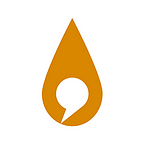Cartoonists get creative
The disruption of the newspaper business has been tough on our cartoonists, but cartoons predate papers and, as Lindsay Foyle explains, our beloved scribblers are experimenting with new ways to fund their work.
Long before newspapers published cartoons, William Hogarth sold prints in the streets of London. James Gillray, who is sometimes described as the father of political cartooning, did much the same between 1792 and 1810. Editorial cartooning got a boost in Australia in 1855 when Melbourne Punch hit the streets. The Bulletin followed in 1880. When that newspaper introduced photoengraving in 1883, any newspapers wanting to be taken seriously saw the need to run political cartoons.
There has been a serious decline in the number of cartoons and comic strips published in Australian newspapers over recent years, and not for lack of quality work from the cartoonists. As newspapers and magazines have cut costs, platforms for publishing editorial cartoons, comics and illustrations have been drying up. Back in 1985, 119 cartoonists entered the Australian Cartoonists’ Association Stanley Awards. This year there were 82 entrants.
So some cartoonists are resorting to a Hogarth/Gillray style of getting their work out to the public. While not selling prints, they are publishing books of their cartoons.
Having already had eight books of her cartoons published, last year Judy Horacek thought it was the right time for another, Random Life. Horacek has been published in some of the best newspapers in Australia and twice nominated for a Walkley Award, but this time she did not pitch the book to a publisher. She floated the idea on Pozible, a crowdfunding platform, to raise money for a self-published effort. Once 450 people had backed the project, she set to work.
It was more complicated than she first thought. After finding a designer (DesignEdge), drawing the cartoons, purchasing an ISBN number, finding a printer (Ligare), a distributor (Schwartz Publishing), and convincing the late comedian John Clarke to write a foreward, the first book from Horack Press was published in July this year.
“If every day was like yesterday, for instance, I’ve estimated it would take 360 years to replace my previous salary. But there are better days too.
It was not long before the pledged books were delivered, the bookshops stocked and she had set off promoting the book in Melbourne, Sydney, Canberra and Brisbane, and Bendigo. The feedback was great and she met former Governor-General Quentin Bryce, who upgraded her from “absolute treasure” (her quote on the front of Random Life) to “total and absolute treasure”.
Most books of cartoons sell between 2000 and 3000 copies. Some get as high as 30,000 and there have been reports of 60,000 copies for a very few.
At the lower end of the scale, little known Sydney-based comic artist and humorist Rob Feldman has also published his own books. He says he “delights in producing original comic-style books for kids and older readers alike”.
His first book was Cows in Cars, published in 2014. Since then he’s produced two more. His latest is a comic book geared to older primary school children and beyond, called Buster Kaboo and the Great Kitchen Floor Fiasco. None have been big sellers, but as he explains, “The crux of the matter is that apart from the creation of the books, I’ve devoted very little time to marketing, and thus my sales have been very modest.”
He says “I have a background in performing and teaching, so I am dependent on my day jobs as a kids entertainer and aged-care humour therapist.” He intends to promote his books by taking them book-and-literacy promotion shows, with art workshops, to libraries and primary schools through the Sydney region.
Many cartoonists have embraced Twitter as a platform to share their work with loyal followers — Cathy Wilcox, David Pope and Mark Knight have tens of thousands of followers between them. Alan Moir has more than 16,000 followers of his own, and now uses Twitter to promote his new cartoon subscription service.
Moir had been the Sydney Morning Herald’s daily cartoonist since 1984, but in June he became a Saturday-only contributor. Realising he needed to find a way to supplement his income, he started a subscriber-based online cartoon service. He said he “was lucky his wife, Diana, had extensive knowledge about the internet and web design.” She helped him to set up the site and he is now offering his daily view via an Monday to Friday online subscription for just $4 per month.
“It’s only been going a couple of months now, but it is promising, some days better than others,” he recently told Crikey. “If every day was like yesterday, for instance, I’ve estimated it would take 360 years to replace my previous salary. But there are better days too. We expect it to be only a supplementary income in the longer term. We hover ‘somewhere between disaster and dream’, as Diana describes it.”
Lindsay Foyle has been writing about Australian cartooning since 1986 and drawing cartoons for about four decades.
